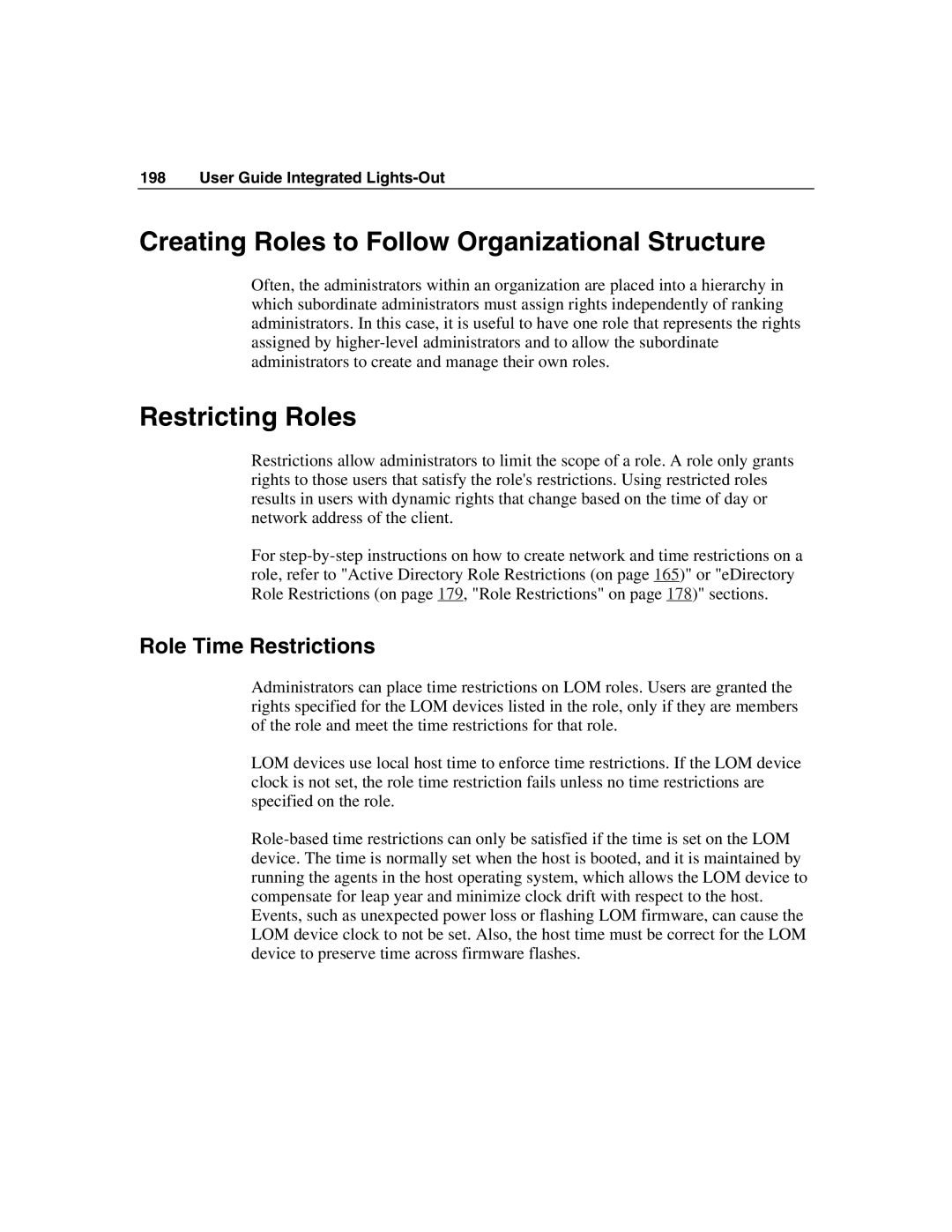198 User Guide Integrated Lights-Out
Creating Roles to Follow Organizational Structure
Often, the administrators within an organization are placed into a hierarchy in which subordinate administrators must assign rights independently of ranking administrators. In this case, it is useful to have one role that represents the rights assigned by
Restricting Roles
Restrictions allow administrators to limit the scope of a role. A role only grants rights to those users that satisfy the role's restrictions. Using restricted roles results in users with dynamic rights that change based on the time of day or network address of the client.
For
Role Time Restrictions
Administrators can place time restrictions on LOM roles. Users are granted the rights specified for the LOM devices listed in the role, only if they are members of the role and meet the time restrictions for that role.
LOM devices use local host time to enforce time restrictions. If the LOM device clock is not set, the role time restriction fails unless no time restrictions are specified on the role.
